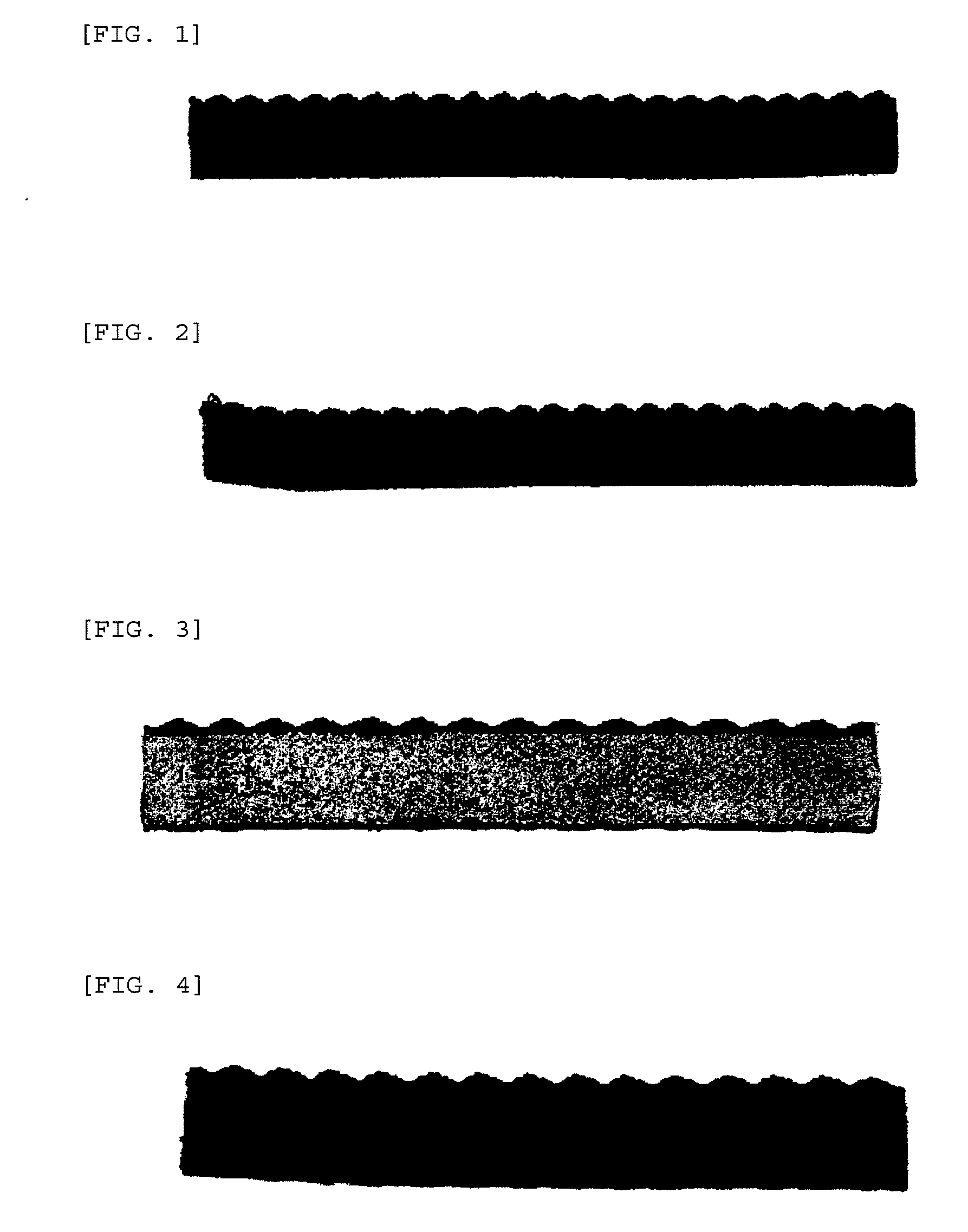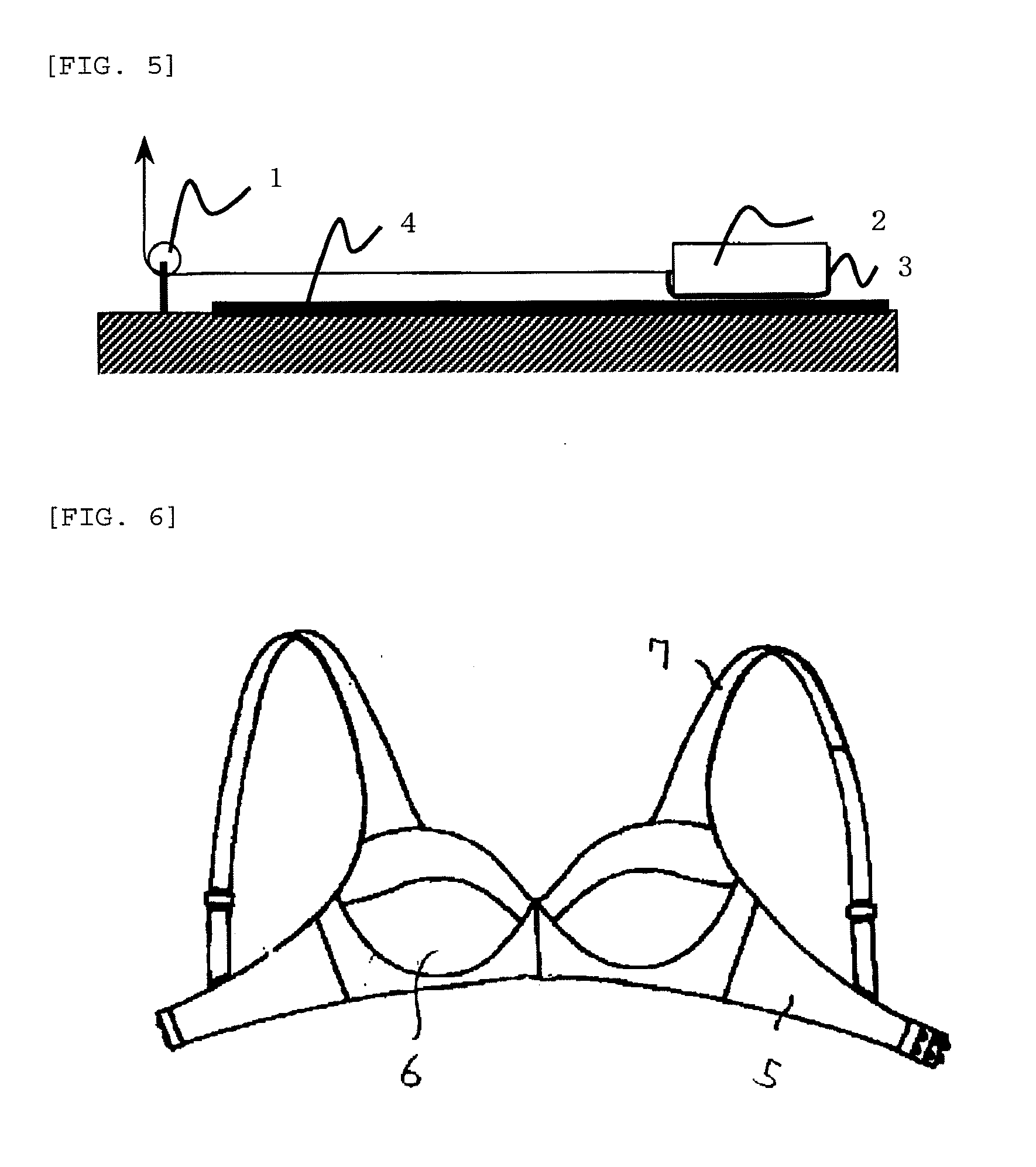Antislipping tape and textile products
a technology of anti-slipping tape and textile products, applied in the field of anti-slipping tape, can solve the problems of poor blood circulation, unwell feeling, and remarkably reduced anti-slipping effect of the tape, and achieve the effect of excellent anti-slipping effect and comfortable skin
- Summary
- Abstract
- Description
- Claims
- Application Information
AI Technical Summary
Benefits of technology
Problems solved by technology
Method used
Image
Examples
example 1
[0074]Using polyethylene terephthalate (with a melt viscosity at 280° C. of 1200 poise, and a matting agent content: 0 wt %) as the island component, and polyethylene terephthalate (with a melt viscosity at 280° C. of 1750 poise) obtained by copolymerizing 6 mol % 5-sodium sulfoisophthalic acid and 6 wt % polyethylene glycol with a number-average molecular weight of 4000 as a sea component (dissolution rate ratio (sea / island)=230), a sea-island type composite undrawn fiber with sea:island=30:70, and the number of islands=836 was melt spun at a spinning temperature of 280° C. and at a spinning rate of 1500 m / min, and was wound once.
[0075]The resulting undrawn yarn was roller drawn at a drawing temperature of 80° C., and at a draw ratio of 2.5 times, and then, was heat set at 150° C., and was wound. The resulting sea-island type composite fiber (drawn yarn for the filament yarn A) had 56 dtex / 10 fil. The fiber cross-section was observed by a transmission electron microscope TEM. As a ...
example 2
[0082]Using polyethylene terephthalate (with a melt viscosity at 280° C. of 1200 poise, and a matting agent content: 0 wt %) as the island component, and polyethylene terephthalate (with a melt viscosity at 280° C. of 1750 poise) obtained by copolymerizing 6 mol % 5-sodium sulfoisophthalic acid and 6 wt % polyethylene glycol with a number-average molecular weight of 4000 as a sea component (dissolution rate ratio (sea / island)=230), a sea-island type composite undrawn fiber with sea:island=30:70, and the number of islands=836 was melt-spun at a spinning temperature of 280° C. and at a spinning rate of 1500 m / min, and was wound once.
[0083]The resulting undrawn yarn was roller drawn at a drawing temperature of 80° C., and at a draw ratio of 2.5 times, and then, was heat set at 150° C., and was wound. The resulting sea-island type composite fiber (drawn yarn for polyester filament yarn A) had 56 dtex / 10 fil. The fiber cross-section was observed by a transmission electron microscope TEM....
PUM
| Property | Measurement | Unit |
|---|---|---|
| Temperature | aaaaa | aaaaa |
| Length | aaaaa | aaaaa |
| Force | aaaaa | aaaaa |
Abstract
Description
Claims
Application Information
 Login to View More
Login to View More - R&D
- Intellectual Property
- Life Sciences
- Materials
- Tech Scout
- Unparalleled Data Quality
- Higher Quality Content
- 60% Fewer Hallucinations
Browse by: Latest US Patents, China's latest patents, Technical Efficacy Thesaurus, Application Domain, Technology Topic, Popular Technical Reports.
© 2025 PatSnap. All rights reserved.Legal|Privacy policy|Modern Slavery Act Transparency Statement|Sitemap|About US| Contact US: help@patsnap.com



